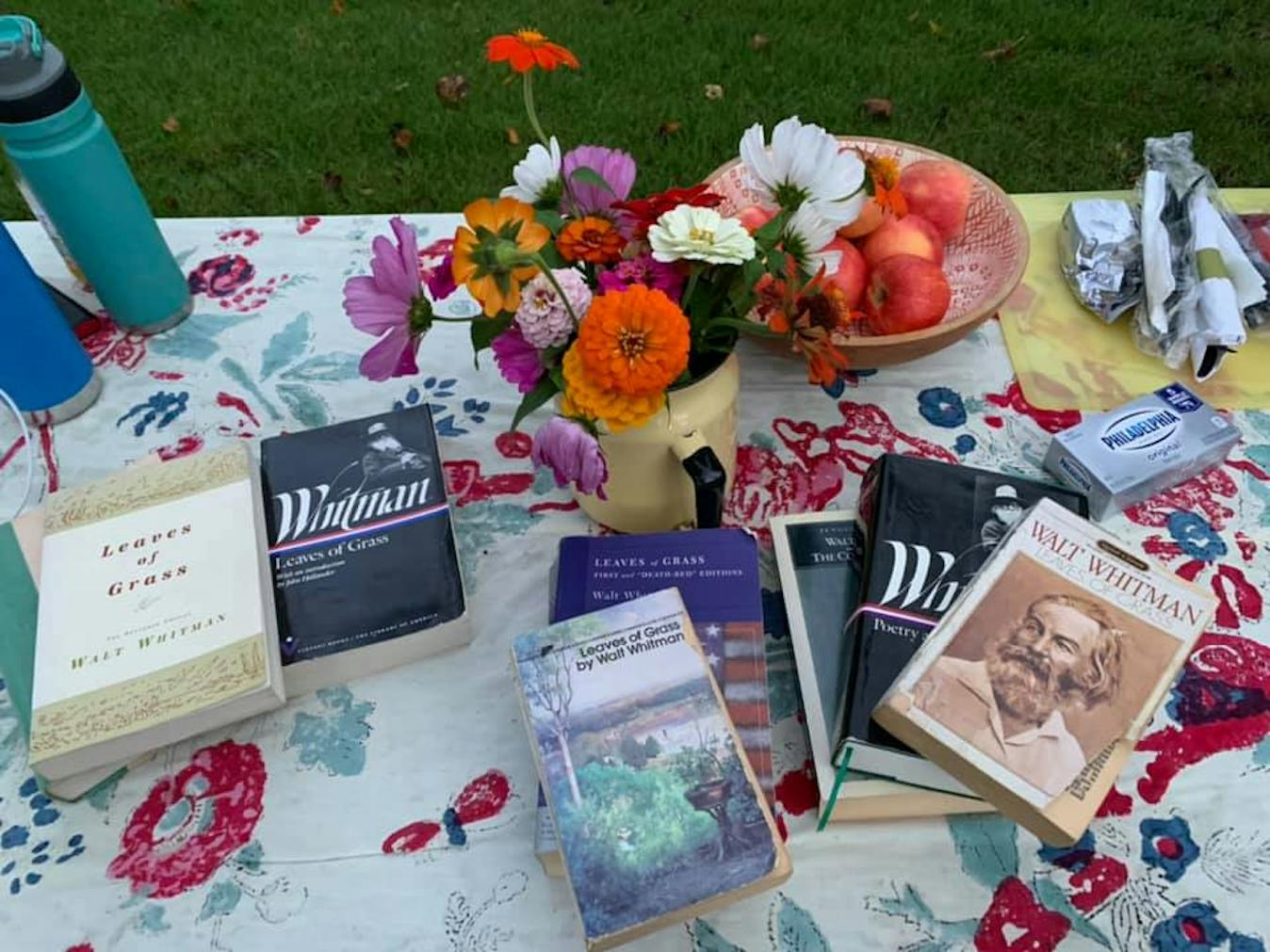Cultural destination: Bringing poetry and art to Mount Pleasant
When the night falls on Mount Pleasant, Denise Fanning goes home, sets up her studio and starts making sculptures. In the same house, when morning comes, Robert Fanning comfortably sits with a cup of coffee and drafts his latest poem.
Fannings are a married couple, who both work at Central Michigan University in creative fields. Denise is an art coordinator at the Baber Room Gallery and Robert is a creative writing professor. For both, art is an essential part of their lives and something they work to celebrate in Mount Pleasant.
“I want this gallery to be a destination for art,” Denise said. “I want people to know that the quality work that we’re showing here is worth travelling to.”

Creativity as an essential language
Robert started at CMU in 2008, when the couple moved from Detroit. There, Denise had taught sculpture.
The first years in Mount Pleasant were challenging because they were raising two small children and didn’t have a proper studio to make art at.
“This struggle of being a mom, working and trying to be an artist is not a unique one, but it’s one that only somebody who’s doing all those things can relate to,” Denise said. “Being an artist is perceived by a lot of people as frivolous … But it’s not. It’s not a hobby for me, it’s not a thing I just do for fun.
“(Art) is like an essential language for me. I have to do it.”
She created art throughout the years, setting deadlines and rearranging priorities, but not without challenges and late nights.
Denise became an art coordinator and gallery director at CMU in 2021, which she calls “a Halley’s comet of all jobs for (her) in Mount Pleasant.” The job incorporates all her experience and education as well as still allows her to be a full-time artist.

“For a person born with a creative drive, creating is an essential communication tool,” Denise said. “When that part of your language is cut off, you really can’t present yourself to the world as a whole person … I see it as crucial for me to be creating in order to be a better mom, to be a better employee, a better friend, a better human.”
For Robert, an essential language and “a language of love” was creative writing. Since he was a child, he loved playing with words and writing short stories.
“It became a way of processing my experience, giving myself a voice,” Robert said. “It takes time to process ideas, and so poetry slows me down and gives me the authority to take time, to choose my words … For me poetry is a truth telling medium. It’s a way of making both more and less sense of the world and a chance to play with language.”
The arts can also serve the community as a way of communication, they both said.
Importance of art for our community
Denise and Robert offer programming in both of their fields to create those connections within the community and offer access to arts.
Denise brings artists’ talks and exhibitions to the Baber Room Gallery. The most recent one captures the works of Michigan artist Teresa Dunn, who also shared her experiences of growing up as a Mexican American in the Midwest.
“The arts can offer a sense of cultural connection that allows people to feel more human, feel more alive, feel more inspired, feel like they’re getting a deeper window into humanity,” Denise said.

Through these events, the community is able to appreciate the works up close, hear about the artists’ experiences and get a window into how and why the artists created the works on exhibit. It gives an opportunity to connect with the artists and gives visibility to different ideas, Denise said.
She also wanted to bring artists who people don’t typically have access to or see.
“It was important to me to bring a diverse range of voices, both in styles of art that are being portrayed and different approaches to art making, but also a diverse set of voices for the artists’ backgrounds themselves and to offer diverse representation,” Denise said.
Historically the art that was celebrated was made by European and predominantly white artists, Denise said. But that also eliminated other people from that conversation and connection with art.
“We have a diverse student body, we have a diverse community that should always get to see themselves reflected in the experiences shared here that in some way or feel connected in a way,” Denise said. “And if you don't see yourself reflected, you learn more about … another person's set of experiences that can help expand your empathy, your sense of shared humanity … through individual experiences.”
Since Robert just came to CMU, he saw a successful Meijer Writer’s Series, which brought national writers, but he also wanted to celebrate the local ones. He asked Art Reach of Mid Michigan, an art gallery in town, whether they would like to host poetry readings, and they agreed. This is how in 2009 Robert started his Wellspring Series.

Since 2009, Wellspring brings writers from all around the state and features CMU students alongside of them. The events also have special live music breaks and food, and typically gathers an audience of 75-100 people.
Similar to Wellspring, other CMU English department professors started a Faculty Favorites Series this year at the Sleepy Dog Books. The events feature professors talking about their favorite books.
Another series that Robert started is the annual Walt Whitman “Leaves of Grass” Marathon Reading, which celebrated its 16th year this past October. Typically on the first Friday in October, the reading starts at dawn and goes all day long in Fabiano Botanical Gardens. People gather to read “Leaves of grass” by Walt Whitman, lay on the grass by the pond and have fun.

Bringing artists to the area attracts more visitors, and enhances what Robert called the “creative infrastructure” of the town. Denise said the evidence for that is the consistently great turnout of people showing up to the art and writing events and “hungrily listening.”
“Art helps us connect on a deeper level of humanity … and it also helps us feel more alive,” Denise said. “Some people are just looking for beauty, some people are looking for something more … what makes their pleasure centers feel ignited … and other people are looking for some much deeper human connection.”
“I think that we are all looking for meaning in our lives,” Robert said. “What it means to be a human being, and art helps to answer that question …It start a dialogue. It also gives solace.
“Art is the only thing that teaches my soul anything.”








